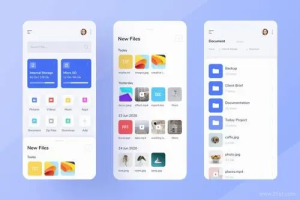内容目录
- • 准备工作
- —— 环境要求
- —— 创建Spring Boot项目
- • 添加依赖项 🔧
- • 配置Redis连接信息 🛠️
- • 编写Redis操作代码 ✍️
- —— 自动配置支持
- —— 使用其他数据类型
- • 测试与验证 📊
- • 常见问题及解决方案 ❓
- —— Q1: 如何解决连接超时问题?
- —— Q2: 数据无法持久化怎么办?
- —— Q3: 如何提高并发性能?
- • 总结
在现代Web应用开发中,缓存技术对于提升系统性能和响应速度至关重要。Redis作为一种高性能的键值存储解决方案,与Spring Boot框架结合使用可以极大简化这一过程。本文将详细介绍如何在Spring Boot项目中集成并操作Redis,帮助你快速上手。
![图片[1]-Spring Boot整合Redis:从零开始的完整指南-连界优站](https://www.6x66.cn/wp-content/uploads/2024/10/image-287.png)
准备工作
环境要求
确保你的开发环境已经安装了以下工具:
- JDK 8 或更高版本
- Maven 或 Gradle 构建工具
- Redis 服务器(本地或远程)
创建Spring Boot项目
你可以通过Spring Initializr在线生成器或者IDE插件来创建一个新的Spring Boot项目。选择必要的依赖项,如Spring Web、Spring Data Redis等。
添加依赖项 🔧
如果你使用的是Maven构建工具,请在pom.xml文件中添加如下依赖:
<dependency>
<groupId>org.springframework.boot</groupId>
<artifactId>spring-boot-starter-data-redis</artifactId>
</dependency>对于Gradle用户,则需要编辑build.gradle文件:
implementation 'org.springframework.boot:spring-boot-starter-data-redis'配置Redis连接信息 🛠️
接下来,在application.properties或application.yml文件中配置Redis连接参数。例如:
# application.properties
spring.redis.host=localhost
spring.redis.port=6379
spring.redis.password=your_redis_password或者,如果你更喜欢YAML格式:
# application.yml
spring:
redis:
host: localhost
port: 6379
password: your_redis_password编写Redis操作代码 ✍️
自动配置支持
得益于Spring Boot的强大自动配置功能,我们几乎不需要额外编写任何配置类。只需注入StringRedisTemplate或RedisTemplate即可直接进行数据操作。
import org.springframework.beans.factory.annotation.Autowired;
import org.springframework.data.redis.core.StringRedisTemplate;
import org.springframework.stereotype.Service;
@Service
public class RedisService {
@Autowired
private StringRedisTemplate template;
public void setValue(String key, String value) {
template.opsForValue().set(key, value);
}
public String getValue(String key) {
return template.opsForValue().get(key);
}
}使用其他数据类型
除了简单的字符串外,Redis还支持多种复杂的数据结构,比如列表、集合、哈希表等。下面是一些常见的用法示例:
- 列表:
template.opsForList().leftPush("mylist", "item1"); - 集合:
template.opsForSet().add("myset", "member1"); - 哈希表:
template.opsForHash().put("hashkey", "field", "value");
测试与验证 📊
为了确认一切正常工作,可以在控制器层编写几个简单的接口来进行测试。比如:
import org.springframework.web.bind.annotation.GetMapping;
import org.springframework.web.bind.annotation.RequestParam;
import org.springframework.web.bind.annotation.RestController;
@RestController
public class RedisController {
@Autowired
private RedisService redisService;
@GetMapping("/set")
public String set(@RequestParam String key, @RequestParam String value) {
redisService.setValue(key, value);
return "Set success";
}
@GetMapping("/get")
public String get(@RequestParam String key) {
return redisService.getValue(key);
}
}启动应用程序后,可以通过浏览器或Postman访问这些API端点,观察是否能够正确地设置和获取Redis中的数据。
常见问题及解决方案 ❓
Q1: 如何解决连接超时问题?
如果遇到Redis连接超时的情况,首先检查网络连通性,确保客户端和服务器之间的通信没有被防火墙或其他安全策略阻断。另外,还可以尝试调整连接池配置,增加最大空闲时间和最小空闲连接数等参数。
Q2: 数据无法持久化怎么办?
默认情况下,Redis是非持久化的内存数据库。为了解决这个问题,可以通过修改Redis配置文件启用RDB快照或AOF日志记录功能,以保证数据的安全性和可靠性。
Q3: 如何提高并发性能?
当面对高并发场景时,可以考虑优化Redis集群部署方案,采用分片(Sharding)策略分散负载;同时合理配置缓存淘汰策略,避免因缓存命中率低而导致频繁查询数据库。
总结
通过这篇详细的教程,我们学习了如何在Spring Boot项目中集成Redis,并对其进行了基本的操作。希望这些知识能够帮助你在实际项目中更好地利用Redis的优势。如果有任何疑问或需要进一步的帮助,请随时留言讨论!💬






































暂无评论内容